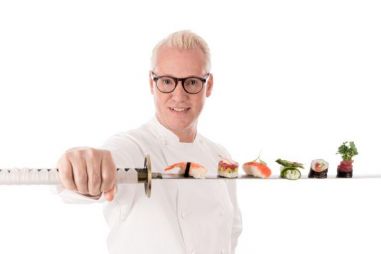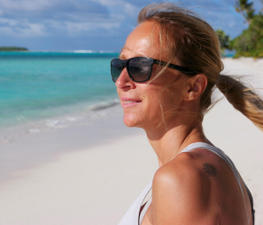Healthy Eating According to Master Chef Rudolph van Veen
Rudolph van Veen is a renowned Dutch celebrity chef, restaurateur, television personality, and author. His passion for food, exercise, and health has shaped his approach to nutrition. One of the key pillars of a healthy lifestyle is food—but what exactly does healthy eating mean? We interviewed Rudolph to hear his perspective. Rudolph: 'When I was young, the only concern about sugar was that it was bad for your teeth. At 25, I could eat an entire cake without worrying about my weight or energy levels. But as I’ve gotten older, those days are behind me—I can’t eat whatever I want anymore. More importantly, I’ve seen firsthand what unhealthy food does to the body. That made me start questioning: how can we eat healthier while still enjoying delicious food?'
- What does healthy eating really mean?
- Key ingredients for a healthy diet
- Is healthy eating really just a strict diet of superfoods and deprivation?
- What is the most common unhealthy habit of modern times?
- What should a healthy plate look like?
- What is the secret to healthy eating?
- Any advice for someone looking to start eating healthier?
- Not that difficult or complicated?
- Healthy eating in Kamalaya Wellness Sanctuary, Thailand
- Who is Rudolph van Veen?
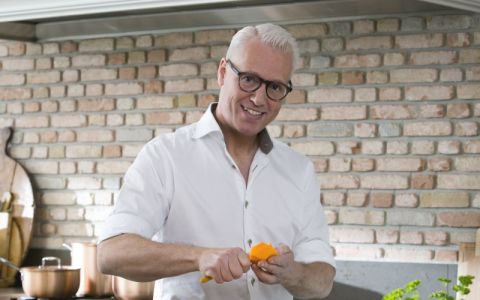
What does healthy eating really mean?
It may seem like a simple question, but the answer is far more complex. I grew up in a world where food was all about indulgence. As a chef, I was trained to create pleasure on a plate—beautifully presented dishes, miniature works of art bursting with flavor. Nutritional value, however, was secondary, barely a consideration. What mattered was the visual appeal and rich flavors: a perfectly plated dish with a generous cut of meat, a velvety sauce made with real butter, crispy fried potatoes, and perhaps four precisely trimmed carrots with their foliage cut to exactly four centimeters. As a pastry chef, I sculpted towering sugar showpieces and baked the most decadent cakes. Healthy food, vegetables, and vitamins? They were simply not a priority. If the meat was delicious, that was all that mattered. But times have changed—both for me as a person and as a chef.
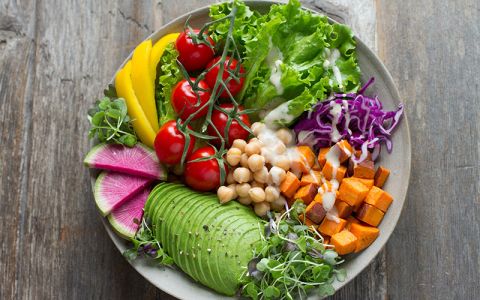
Key ingredients for a healthy diet
Unhealthy and healthy food can mean different things to different people. For me, healthy eating means choosing natural, unprocessed foods as much as possible. Cooking with pure ingredients—whole grains, vegetables, fish, meat, seeds, and fruit—gives your body the nutrients it needs to function properly and digest efficiently. Opt for whole-grain pasta and rice instead of refined versions. Use whole milk rather than semi-skimmed or skimmed. Cook with plenty of vegetables, and choose high-quality fish and meat. A simple rule of thumb when selecting your food: if your grandparents wouldn’t recognize it, don’t eat it. That means skipping jarred tomato sauce, packaged cereals, and flavored yogurts in favor of fresh, whole ingredients.
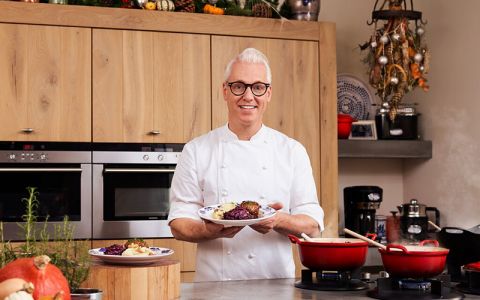
Is healthy eating really just a strict diet of superfoods and deprivation?
'Absolutely not. Instead of eating less, we should focus on eating differently. Overeating is a common issue, and many modern health problems—obesity, type 2 diabetes, kidney disease, heart conditions, and digestive issues—are largely linked to our diet. I am always surprised that bakers still use artificial food coloring in their cakes. When I ask them if they would serve it to their own children, they immediately say no. Yet, they offer it to customers, assuming people would rather have a bright red cake full of chemicals than a slightly less vibrant but healthier alternative. It’s an important conversation to have—how can we take food to the next level, making it both delicious and nourishing?'
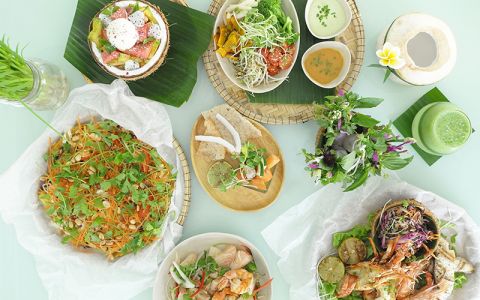
What is the most common unhealthy habit of modern times?
'In processed products. At the supermarket, we pick up one of those magic boxes with a beautifully tempting image of chicken madras, Tuscan schnitzel, or boeuf bourguignon on the packaging. But when we open it at home, all we find are two bags of powder—a spice mix often loaded with salt, simply because it's cheaper than using real herbs and spices. Where are the fresh tomatoes, chunks of leek, or broccoli shown on the box? They don’t exist. It’s an illusion, a marketing trick, selling the idea of a home-cooked meal while providing little more than artificial flavors. The same goes for convenience foods at train stations and petrol stations. These grab-and-go options offer little to no genuinely healthy choices. Constantly snacking throughout the day isn’t great for our digestive system either, as it needs time to rest and function properly. That said, a positive shift is happening. More and more companies are recognizing the importance of nutrition and are starting to offer healthier lunches to their employees—a step in the right direction.'
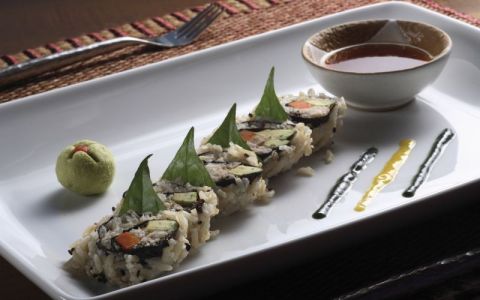
What should a healthy plate look like?
'A balanced plate should ideally consist of half vegetables, a quarter carbohydrates, and a quarter protein from meat or fish. However, many of us have a habit of eating everything on our plate, especially in restaurants where we’ve paid for our meal. While wasting food is not ideal, this mindset often leads us to eat more than we actually need.It's also important to eat mindfully, without distractions from a computer or TV. Take the time to taste your food, enjoy the process, chew thoroughly, and eat at a relaxed pace. Sticking to set mealtimes is also beneficial. Although I love preparing dinner for friends and lingering at the table until midnight, enjoying food and drinks, this isn’t ideal for our health. However, the social aspect of food is just as important. That’s why I follow the 80/20 rule, eating healthy 80 percent of the time, while allowing 20 percent for life’s little pleasures, like a glass of wine, a pastry, or ice cream.'
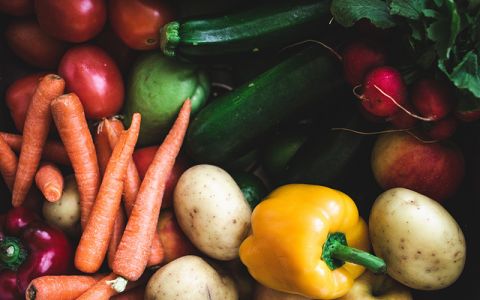
What is the secret to healthy eating?
'More vegetables! One of the simplest and most effective ways to improve overall health is by increasing vegetable intake. It may seem like a lot—250 grams of vegetables per day—but it's an easy habit to build. When I first started, I simply weighed my vegetables daily until it became second nature. And 250 grams doesn’t mean just a big pile of cauliflower or green beans. Mix it up. Combine different varieties like broccoli, peppers, and carrots. In Japan, the government encourages people to include five colors on their plate every day, as each color represents different nutrients. Experiment with different cooking methods. Stir-frying, steaming, or lightly boiling (not too long, or the vitamins will disappear) can all make a difference. Steaming, in particular, is not only a healthy option but also preserves the natural flavors of your food.

Any advice for someone looking to start eating healthier?
'Do it together. Making healthy eating a shared goal with family or friends makes the transition easier and keeps everyone motivated. A great place to start is by cleaning out your kitchen. Go through your cupboards, see what you have, and get rid of processed products you rarely use or that aren’t beneficial for your health. Think sauces, sachets, jars, canned goods, and sugars. Replace them with healthier, whole-food alternatives. Start reading labels. Check the first three to five ingredients to see what makes up most of the product. If a jar of jam contains 60 percent sugar and only 12 percent strawberries, it’s clear that it’s not the best choice. Finally, invest in a good selection of herbs and spices to add natural flavor to your meals—once you have that, you’re ready to go.'
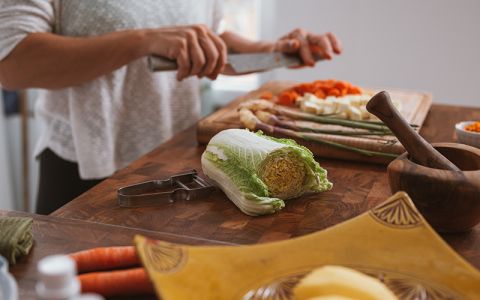
Not that difficult or complicated?
'Healthy eating is within everyone’s reach, but it starts with motivation and a personal commitment. You have to take that first step yourself. ’m not a big fan of sports, yet I recently started exercising. I still don’t love it, but I feel so much healthier and more energized. Building muscle becomes even more important as we age, and the same principle applies to changing eating habits. The first two to four weeks take some adjustment—getting used to 250 grams of vegetables a day, the taste of unprocessed food, and different portion sizes. But once your body adapts, you’ll notice a real difference. More energy, better digestion, and an overall sense of well-being. It’s worth the effort.'

Healthy eating in Kamalaya Wellness Sanctuary, Thailand
Rudolph has visited Kamalaya Wellness Sanctuary three times, each time seeking relaxation, reflection, and meaningful conversations with fellow guests. But above all, he returns for the food. The cuisine at Kamalaya is truly exceptional. Their approach to healthy eating is both beautifully presented and incredibly flavorful. Every ingredient, preparation method, and portion is carefully considered and perfectly balanced. No fried food, no peanuts—just a vibrant selection of thirty different steamed vegetables. Every visit to Kamalaya leaves Rudolph feeling inspired and motivated, with new insights into nutrition and wellness. 'I always come away with fresh ideas and knowledge. I highly recommend the cooking courses!'
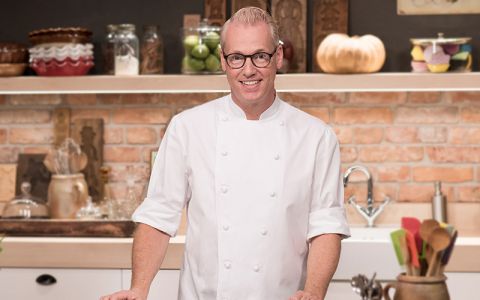
Who is Rudolph van Veen?
From a young age, Rudolph (born 1967) knew he wanted to become a chef. He trained at the Culinary School of Breda, earned his SVH Meesterkok degree, and specialized in patisserie. His talent and dedication led him to win multiple national and international awards and medals.Rudolph gained widespread recognition after launching Life & Cooking on Dutch television, becoming a well-known celebrity chef. He has authored several cookbooks and presented numerous shows on 24Kitchen. His latest venture, Food First Network, is a platform dedicated to food, exercise, and health. I don’t own a restaurant, nor do I want to, he says, but I do want to contribute to people’s health and well-being.

 EN
EN NL
NL BE
BE